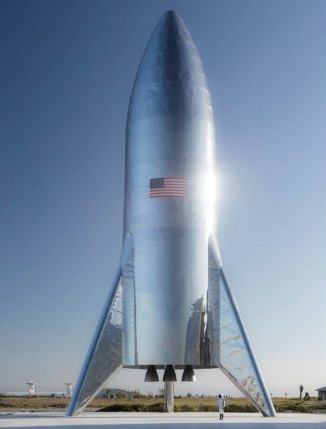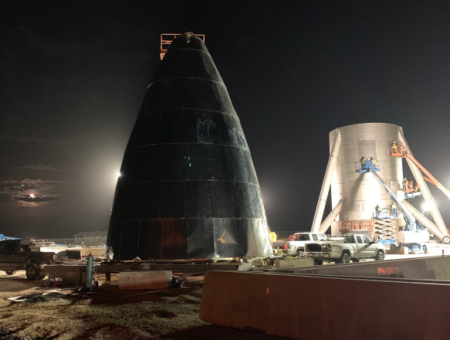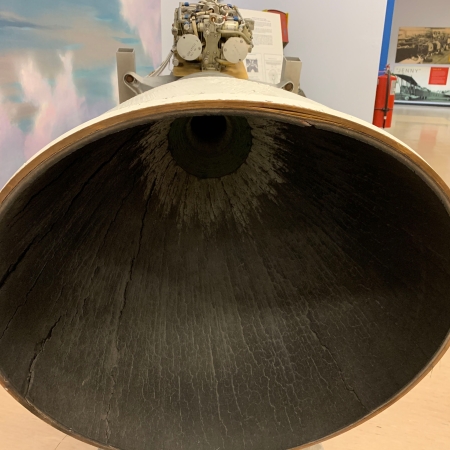SpaceX reveals picture of fully assembled suborbital Starship hopper

Capitalism in space: SpaceX has released pictures of the fully assembled suborbital Starship hopper, planned for its first test flights in the coming months. The image on the right is not a simulation, but the real thing.
In tweets by Elon Musk, he also revealed that they hope to have an orbital prototype of Starship built by June, with the Super Heavy booster beginning construction in the spring. More information here.
This is unquestionably an ambitious schedule, but the contrast with the development of SpaceX’s manned Dragon capsule, slowed absurdly by the government shutdown and NASA’s bureaucracy, highlights clearly the fundamental reason why SpaceX refused government money for the development of Super Heavy/Starship. By using private funds, SpaceX is free to proceed at its own pace, which is fast, rather than waiting for permission from the bean-counters sitting in NASA offices who have no real idea how to build anything.
It is likely they will not meet this schedule. It is also likely that they will also get this done in a time frame far faster than anyone expects.

Capitalism in space: SpaceX has released pictures of the fully assembled suborbital Starship hopper, planned for its first test flights in the coming months. The image on the right is not a simulation, but the real thing.
In tweets by Elon Musk, he also revealed that they hope to have an orbital prototype of Starship built by June, with the Super Heavy booster beginning construction in the spring. More information here.
This is unquestionably an ambitious schedule, but the contrast with the development of SpaceX’s manned Dragon capsule, slowed absurdly by the government shutdown and NASA’s bureaucracy, highlights clearly the fundamental reason why SpaceX refused government money for the development of Super Heavy/Starship. By using private funds, SpaceX is free to proceed at its own pace, which is fast, rather than waiting for permission from the bean-counters sitting in NASA offices who have no real idea how to build anything.
It is likely they will not meet this schedule. It is also likely that they will also get this done in a time frame far faster than anyone expects.



